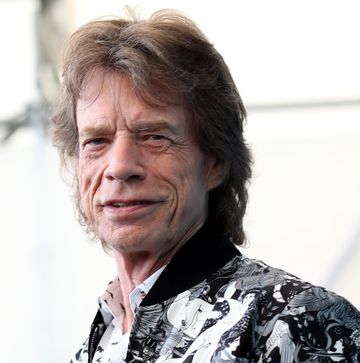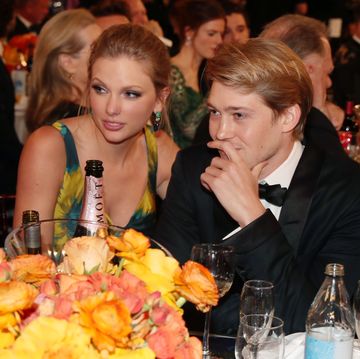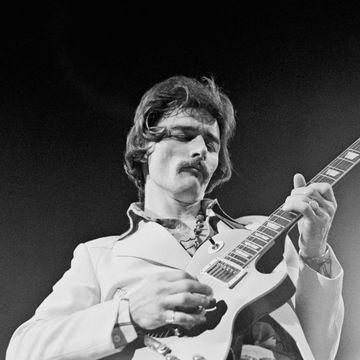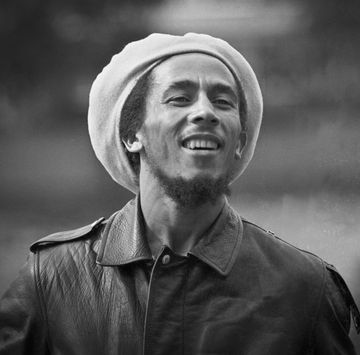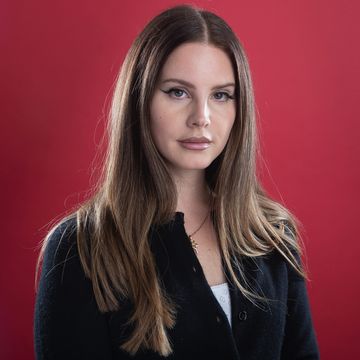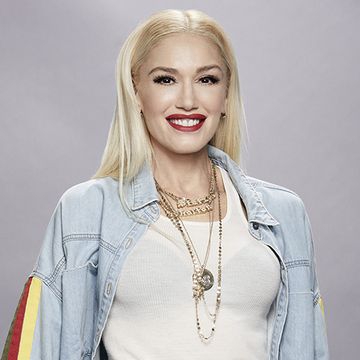(1946-)
Who Is Patti Smith?
Patti Smith is a singer, writer and artist who became a highly influential figure in the New York City punk rock scene. After working on a factory assembly line, she began performing spoken word and later formed the Patti Smith Group (1974-79). Her most famous album is Horses. Her relationship with Fred "Sonic" Smith caused a hiatus in her singing career, but she returned to music after his untimely death and later earned acclaim for a series of autobiographical books.
Early Life
Singer, songwriter and poet Patricia Lee Smith was born on December 30, 1946, in Chicago, Illinois. She was the eldest of four children born to Beverly Smith, a jazz singer turned waitress, and Grant Smith, a machinist at a Honeywell plant. After spending the first four years of her life on the south side of Chicago, Smith's family moved to Philadelphia in 1950 and then to Woodbury, New Jersey, in 1956, when she was 9 years old.
A tall, gangly and sickly child with a lazy left eye, Smith's outward appearance and shy demeanor gave no hint of the groundbreaking rock star she would become. However, Smith says she always knew that she was destined for greatness. "When I was a little kid, I always knew that I had some special kind of thing inside me," she remembered. "I mean, I wasn't attractive, I wasn't very verbal, I wasn't very smart in school. I wasn't anything that showed the world I was something special, but I had this tremendous hope all the time. I had this tremendous spirit that kept me going... I was a happy child, because I had this feeling that I was going to go beyond my body physical... I just knew it."
Art and Musical Inspirations
As a child, Smith also experienced gender confusion. Described as a tomboy, she shunned "girly" activities and instead preferred roughhousing with her predominantly male friends. Her tall, lean and somewhat masculine body defied the images of femininity she saw around her. It was not until a high school art teacher showed her depictions of women by some of the world's great artists that she came to terms with her own body.
"Art totally freed me," Smith recalled. "I found Modigliani, I discovered Picasso's blue period, and I thought, 'Look at this, these are great masters, and the women are all built like I am.' I started ripping pictures out of the books and taking them home to pose in front of the mirror."
Smith attended Deptford High School, a racially integrated high school, where she recalls both befriending and dating her Black classmates. While in high school, Smith also developed an intense interest in music and performance. She fell in love with the music of John Coltrane, Little Richard and the Rolling Stones and performed in many of the school's plays and musicals.
Upon graduating from high school in 1964, Smith took a job working at a toy factory—a short-lived but terrible experience that Smith described in her first single, "Piss Factory." Later that fall, she enrolled at Glassboro State College—now known as Rowan University—with the intention of becoming a high school art teacher, but she didn't fare well academically and her insistence on discarding traditional curricula to focus exclusively on experimental and obscure artists did not sit well with school administrators. So in 1967, with vague aspirations of becoming an artist, Smith moved to New York City and took a job working at a Manhattan bookstore.
Lyrical Expression
Smith took up with a young artist named Robert Mapplethorpe, and although their romantic involvement ended when he discovered his homosexuality, Smith and Mapplethorpe maintained a close friendship and artistic partnership for many years to come.
Choosing performance poetry as her favored artistic medium, Smith gave her first public reading on February 10, 1971, at St. Mark's Church in the Bowery. The now-legendary reading, with guitar accompaniment from Lenny Kaye, introduced Smith as an up-and-coming figure in the New York art circle. Later the same year, she further raised her profile by co-authoring and co-starring with Sam Shepard in his semiautobiographical play Cowboy Mouth.
Over the next several years, Smith dedicated herself to writing. In 1972, she published her first book of poetry, Seventh Heaven, which earned flattering reviews but sold few copies. Two further collections, Early Morning Dream (1972) and Witt (1973), received similarly high praise. At the same time, Smith also wrote music journalism for magazines such as Creem and Rolling Stone.
'Horses' and the Birth of Punk Rock
Smith, who had experimented earlier with setting her poetry to music, began to more fully explore rock 'n' roll as an outlet for her lyric poetry. In 1974, she formed a band and recorded the single "Piss Factory," now widely considered the first true "punk" song, which garnered her a sizable and fanatical grassroots following. The next year, after Bob Dylan lent her mainstream credibility by attending one of her concerts, Smith landed a record deal with Arista Records.
Smith's 1975 debut album, Horses, featuring the iconic singles "Gloria" and "Land of a Thousand Dances," was a huge commercial and critical success for its manic energy, heartfelt lyrics and skillful wordplay. The definitive early punk rock album, Horses is a near-ubiquitous inclusion on lists of the best albums of all time.
Commercial Success: 'Easter' and 'Because the Night'
Re-billing her act as the Patti Smith Group to give due credit to her band—Lenny Kaye (guitar), Ivan Kral (bass), Jay Dee Daugherty (drums) and Richard Sohl (piano)—Smith released her second album, Radio Ethiopia, in 1976. The Patti Smith Group then achieved a commercial breakthrough with its third album, Easter (1978), propelled by the hit single "Because the Night," co-written by Smith and Bruce Springsteen.
Seclusion and Domestic Life
Smith's fourth album, 1979's Wave, received only lukewarm reviews and modest sales. By the time she released Wave, Smith had fallen deeply in love with MC5 guitarist Fred "Sonic" Smith, and the pair married in 1980. For the next 17 years, Smith largely disappeared from the public scene, devoting herself to domestic life and raising the couple's two children. She released only one album during this time, 1988's Dream of Life, a collaboration with her husband. The album was a commercial disappointment despite including one of Smith's most iconic singles, "People Have the Power."
Comeback and Legacy
When Fred "Sonic" Smith died of a heart attack in 1994—the last in a series of many close friends and collaborators of Smith's who passed away in quick succession—it finally provided Smith the impetus to revive her music career. She achieved a triumphant return with her 1996 comeback album Gone Again, featuring the singles "Summer Cannibals" and "Wicked Messenger."
The artist remained a prominent fixture of the rock music scene with her albums Peace and Noise (1997), Gung Ho (2000) and Trampin' (2004), all of which were highly praised by music critics, proving Smith's ability to reshape her music to speak to a new generation of rock fans. Her 2007 album Twelve featured Smith's take on a dozen rock classics, including "Gimme Shelter," "Changing of the Guards" and "Smells Like Teen Spirit." Smith followed with the critically acclaimed Banga (2012), proving that after 35 years of music and 11 albums, she remained ever evolving.
One of the pioneers of punk rock music, a trailblazer who redefined the role of female rock stars, a poet who unleashed her lyrical talent over powerful guitars, Smith stands out as one of the greatest figures in the history of rock 'n' roll. After four decades, Smith finds her continued motivation to write and make music in the unfairly shortened lives of her loved ones and the needs of her children.
"The people I lost all believed in me and my children needed me, so that's a lot of reasons to continue, let alone that life is great," she says. "It's difficult but it's great and every day some new, wonderful thing is revealed. Whether it's a new book, or the sky is beautiful, or another full moon, or you meet a new friend—life is interesting."
Memoirs: 'Just Kids,' 'M Train,' 'Year of the Monkey'
In 2010, Smith published her acclaimed memoir Just Kids, which gives readers a personal glimpse into her prototypical "starving artist" youth and her close relationship with Mapplethorpe during the late 1960s and '70s in New York City. The work became a New York Times bestseller and received a National Book Award. In 2015, Showtime Networks announced it would be developing a limited series based on Kids. Smith also released another book that year, M Train, a memoir that blends philosophies around art and connection with world travel.
The artist followed in 2019 with a third memoir, Year of the Monkey, this one chronicling the events of her life in 2016, from visiting dying friends to her reaction to Donald Trump winning the presidency.
QUICK FACTS
- Name: Patti Smith
- Birth date: December 30, 1946
- Birth State: Illinois
- Birth City: Chicago
- Birth Country: United States
- Best Known For: Patti Smith is a highly influential figure in the New York City punk rock scene, starting with her 1975 album 'Horses.' Her biggest hit is the single "Because the Night."
- Industries
- Punk
- Fiction and Poetry
- Music
- Astrological Sign: Capricorn
- Schools
- Rowan University
- Interesting Facts
- Patti Smith had an almost two-month residency at CBGB in 1975.
- The song "Piss Factory," which is widely considered the first true punk song, was about Patti Smith's first job at a toy factory.
Fact Check: We strive for accuracy and fairness. If you see something that doesn’t look right, contact us!
QUOTES
- When I was a little kid, I always knew that I had some special kind of thing inside me.
- I wasn't attractive, I wasn't very verbal, I wasn't very smart in school. I wasn't anything that showed the world I was something special, but I had this tremendous hope all the time. I had this tremendous spirit that kept me going... I was a happy child, because I had this feeling that I was going to go beyond my body physical... I just knew it.
- Art totally freed me. I found Modigliani, I discovered Picasso's blue period, and I thought, 'Look at this, these are great masters, and the women are all built like I am.' I started ripping pictures out of the books and taking them home to pose in front of the mirror.
- The people I lost all believed in me and my children needed me, so that's a lot of reasons to continue, let alone that life is great.



